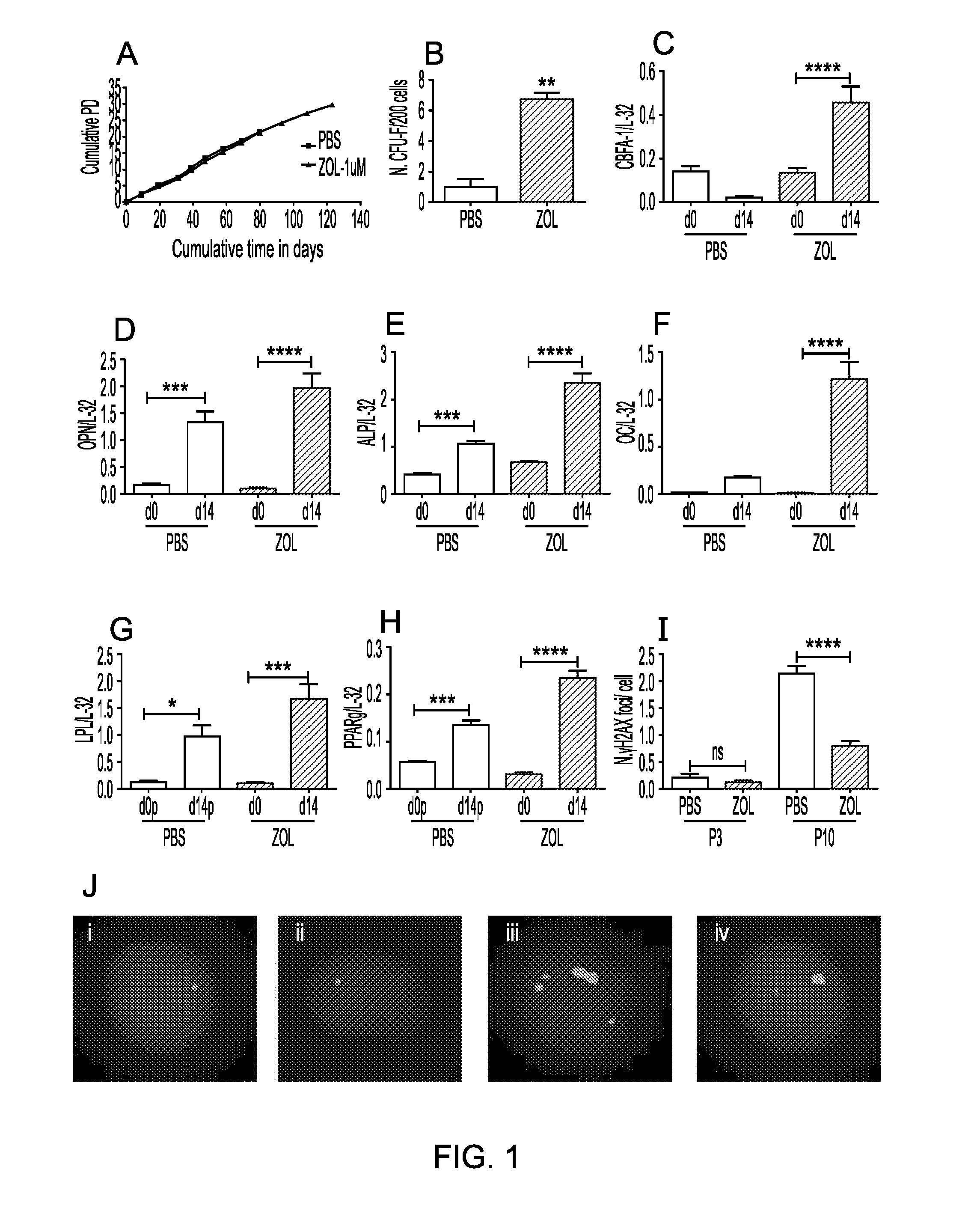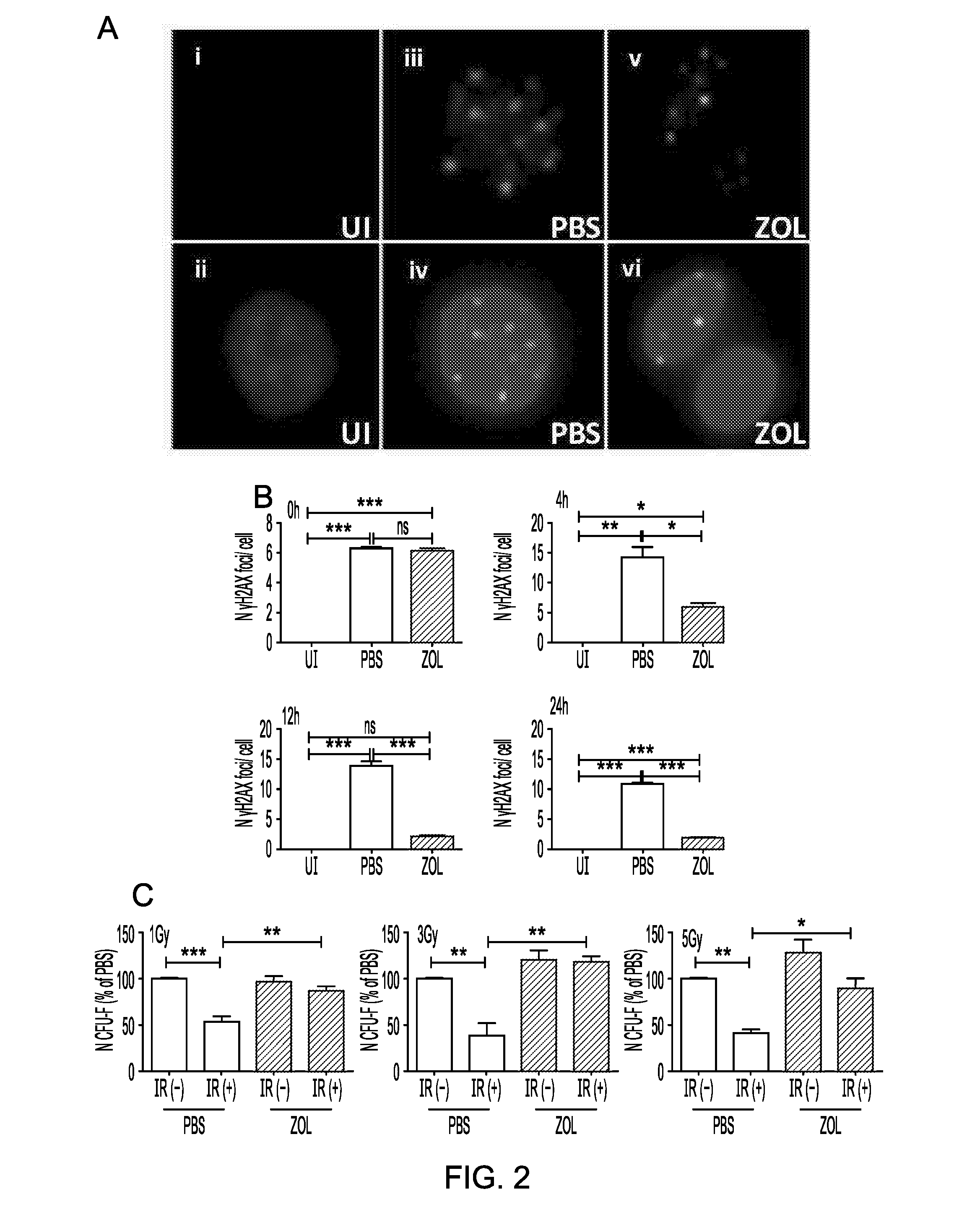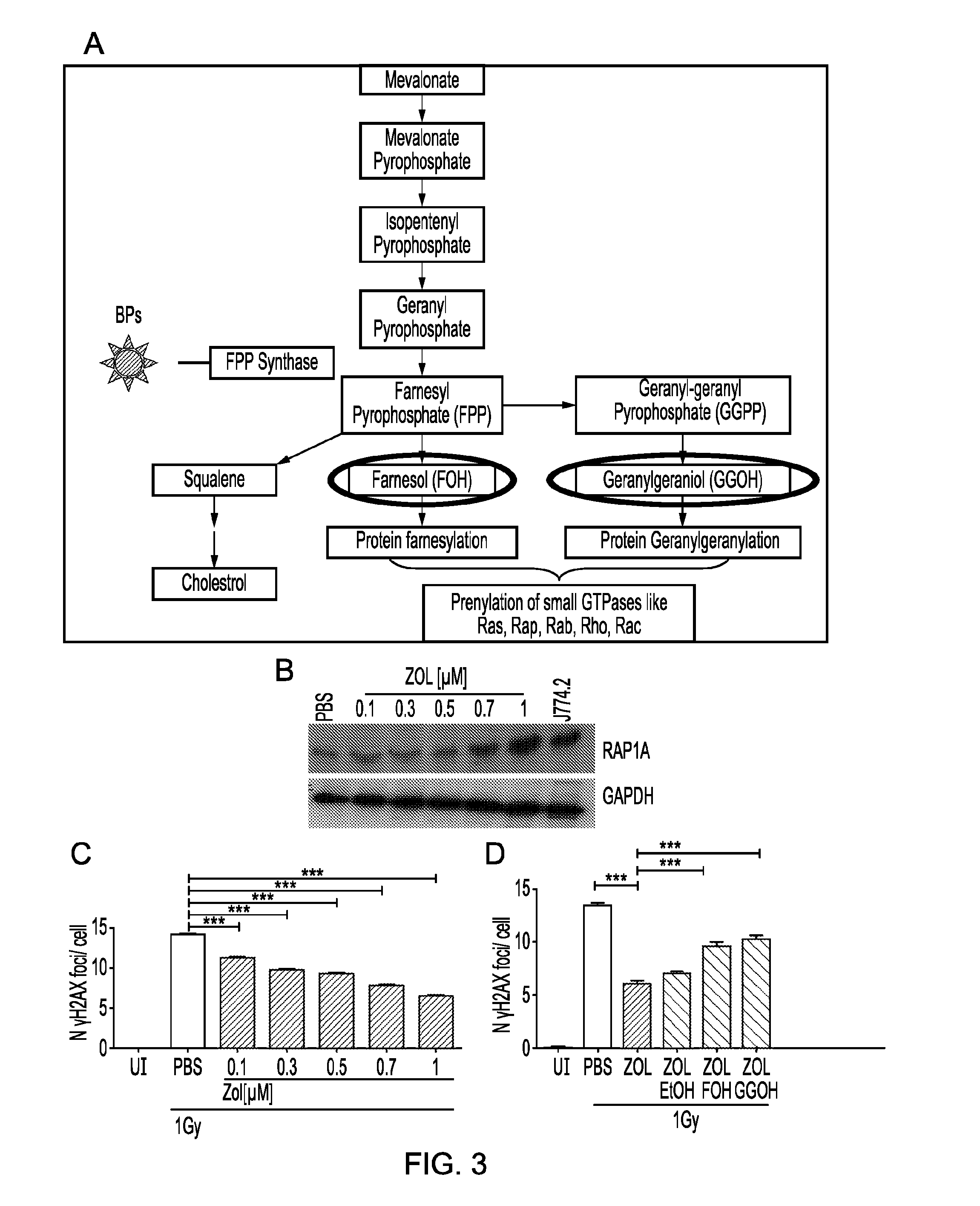Therapeutic uses of bisphosphonates
- Summary
- Abstract
- Description
- Claims
- Application Information
AI Technical Summary
Benefits of technology
Problems solved by technology
Method used
Image
Examples
example 1
Effect of BP (Zol) on Human Bone Marrow Derived Mesenchymal Stem Cells (hMSCs)
[0561]To test whether Zol showed an effect on extended cellular survival, human bone marrow derived mesenchymal stem cells (hMSC) were used as proof of concept. Stem cells are key players in tissue regeneration but they lose their stem cell properties with age, time in culture or following exposure to toxic agents, affecting tissue maintenance and repair.
[0562]The number of population doublings of hMSC cultured in the presence or absence of Zol (1 μM) was monitored until cells stopped growing and showed signs of senescence. Cells treated with Zol proliferated for a longer time than control cells and showed a higher clonogenic ability when replated at low density (n=3, FIG. 1A & 1B), suggesting an extended survival and a delayed loss in the quality of the stem cells, which is usually observed with time in culture.
[0563]Human MSC were exposed to osteogenic and adipogenic (differentiation supplements for 14 d...
example 2
Effect of BP (Zol) on DNA Damage and Clonogenic Ability of hMSCs
[0565]One of the factors affecting cellular lifespan is accumulation of DNA damage. To determine whether Zol had a protective effect on DNA damage, hMSC were exposed to 1 (FIG. 2), 3Gy and 5Gy (data not shown) irradiation in the presence or absence of Zol (1 μM) and DNA damage was evaluated as the number of DNA double strand breaks by counting the number of γH2AX foci. Zol produced a significant reduction in γH2AX DNA damage foci at 4, 12 and 24 hours after irradiation (2A-B, n=3) and this was mirrored by a complete rescue of the clonogenic ability of the cells (FIG. 2C, n=3).
example 3
Mechanism of Action of BP (Zol)
[0566]Zol is known to exert its anti-osteoclast action by inhibiting the farnesyl pyrophosphate synthase
[0567](FPPS) enzyme in the mevalonate pathway and thereby reducing prenylation of small GTPases, such as Rap, Rac, Rho, Rheb (FIG. 3A). It was therefore important to determine whether the effect on DNA damage repair was mediated by the same mechanism of inhibition of the mevalonate pathway or by a different mechanism. To this end, levels of unprenylated Rap1A were measured in hMSC exposed to increasing amounts of Zol. A dose response study showed that increasing dosing with Zol led to increased DNA repair, with an increased expression of unprenylated Rap1a (FIG. 3B) and reduced number of DNA damage foci (FIG. 3C, n=3). Moreover when prenylation was restored by re-introduction of the intermediates geranylgeraniol (GGOH) and farnesol (FOH), downstream of FPP synthase, the effect on DNA damage was reversed (FIG. 3D, n=3), suggesting that Zol promoted DN...
PUM
| Property | Measurement | Unit |
|---|---|---|
| area | aaaaa | aaaaa |
| particle size | aaaaa | aaaaa |
| thickness | aaaaa | aaaaa |
Abstract
Description
Claims
Application Information
 Login to View More
Login to View More - R&D
- Intellectual Property
- Life Sciences
- Materials
- Tech Scout
- Unparalleled Data Quality
- Higher Quality Content
- 60% Fewer Hallucinations
Browse by: Latest US Patents, China's latest patents, Technical Efficacy Thesaurus, Application Domain, Technology Topic, Popular Technical Reports.
© 2025 PatSnap. All rights reserved.Legal|Privacy policy|Modern Slavery Act Transparency Statement|Sitemap|About US| Contact US: help@patsnap.com



